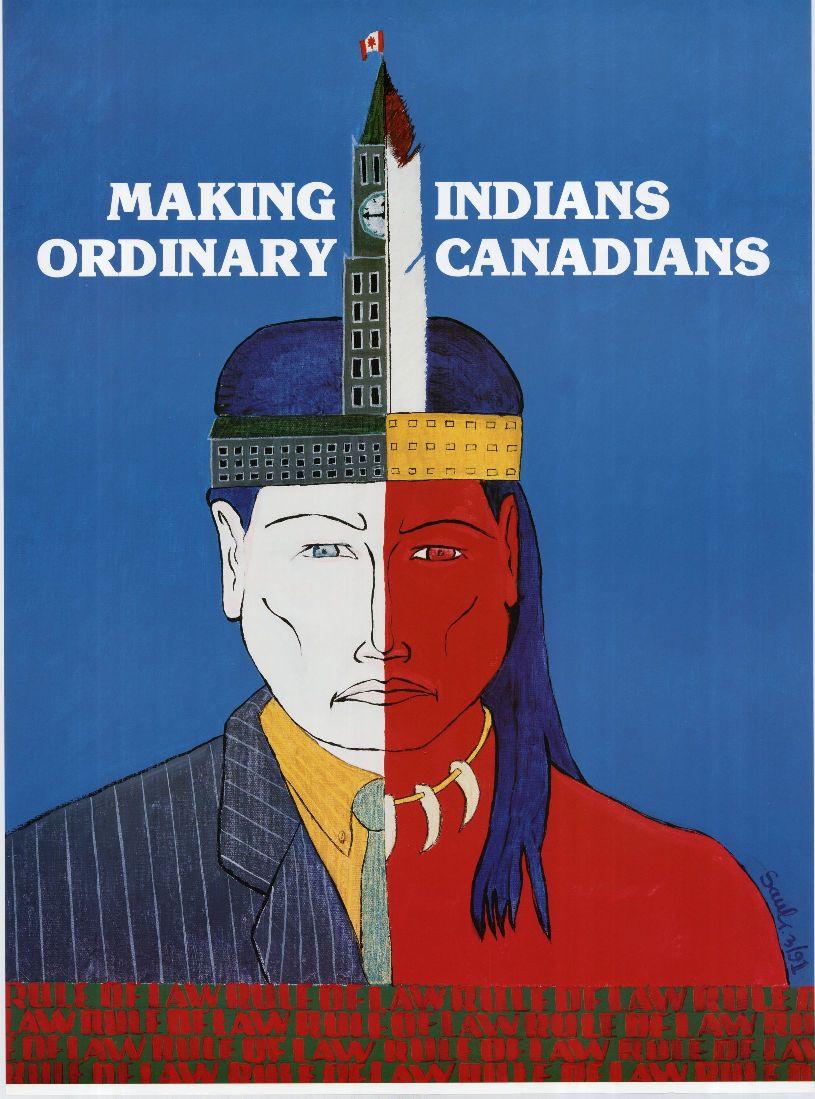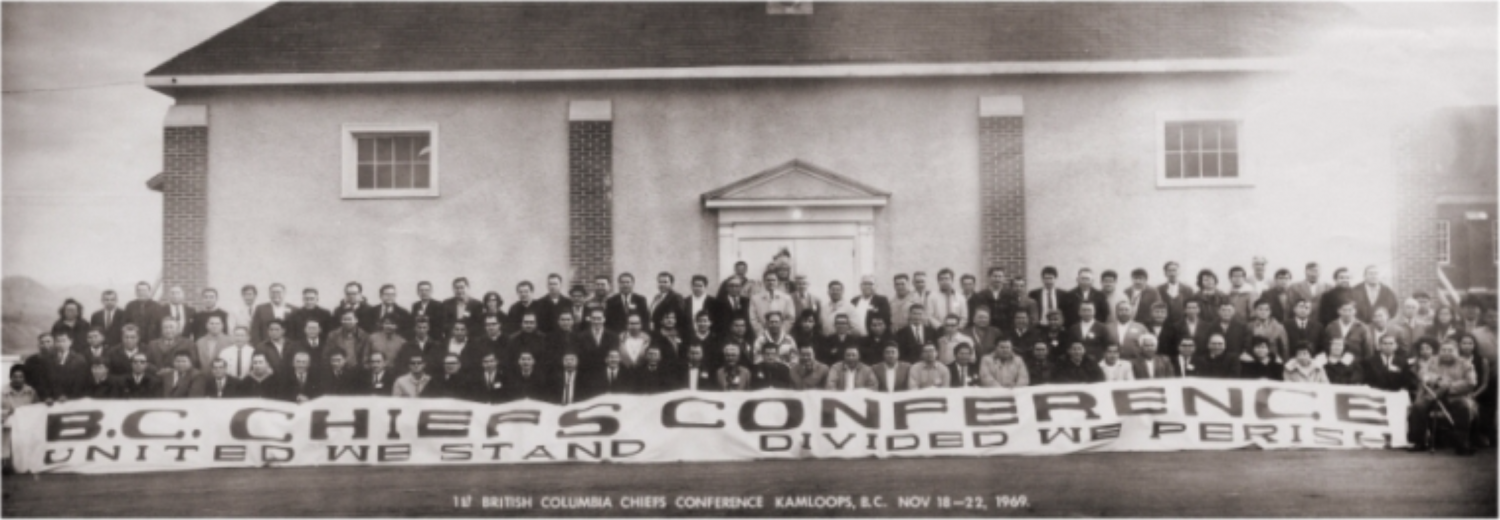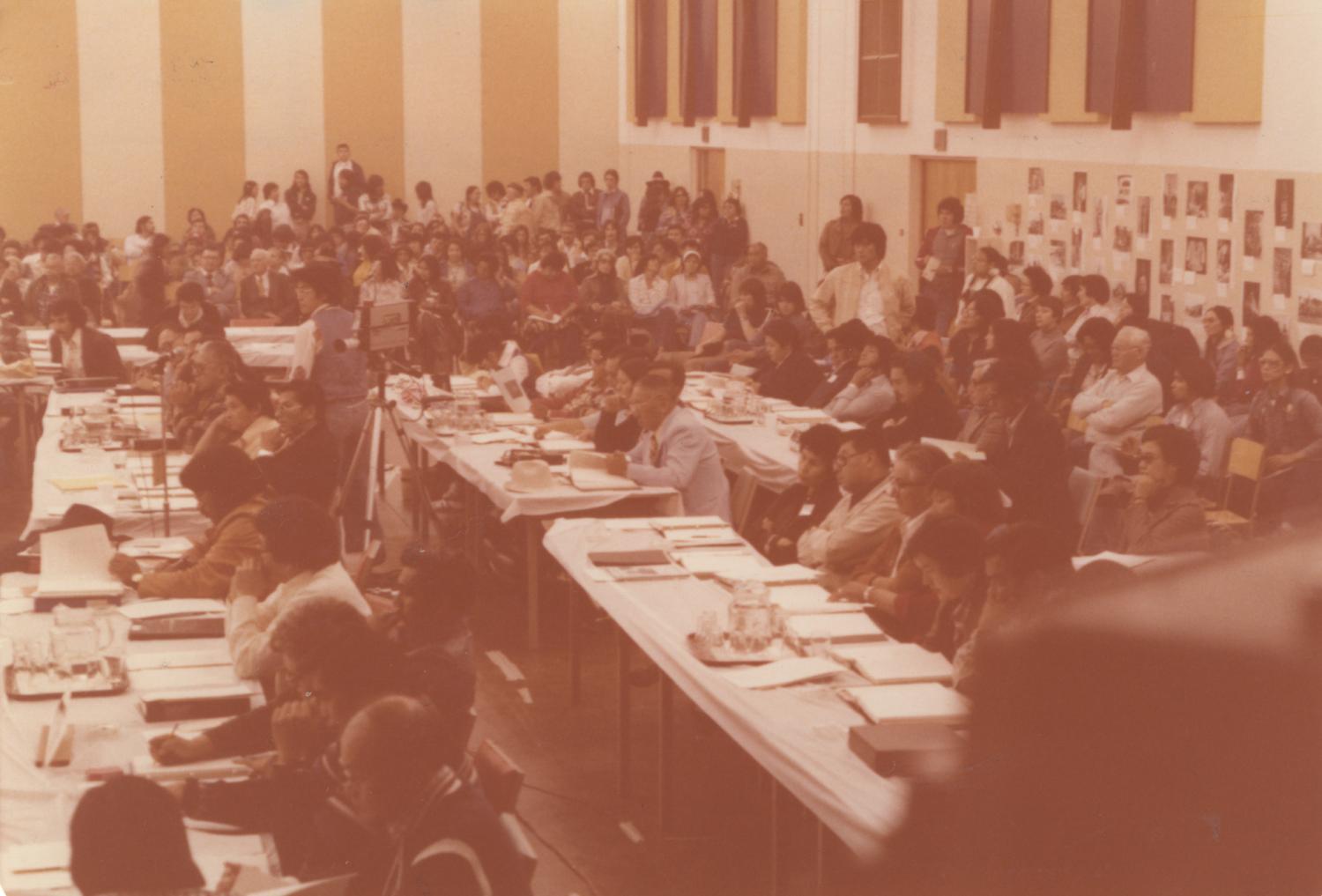B.C. Chiefs Team Up
Union of B.C. Indian Chiefs forms in response to the controversial “White Paper”
Date: 1969
It was the summer of 1969, and things appeared to be looking up for Indigenous people in Canada. Inspired by the civil rights movement, the federal government had spent years researching issues facing Indigenous people, including consulting with First Nations across the country about what could be done to improve the lives of their people.
In 1969, the Department of Indian Affairs finally published the product of this investigation, a policy document that came to be known as the "White Paper." It called for, among several measures, the elimination of Indian status and the Indian Act, dissolving the Department of Indian Affairs, repealing treaties, and handing over the jurisdiction of Aboriginal issues to provincial governments.
It was a shock. In all of the years of research and interviewing, First Nations had asked for none of this. Instead, many Indigenous saw the proposal as a final, unwelcome step towards their forced assimilation into mainstream Euro-Canadian society.
In British Columbia, Indigenous leaders decided to take measures into their own hands. Chief Dennis Alphonse of the Cowichan Band wrote to his compatriots throughout the province, proposing a meeting to discuss the consequences of the proposed policies. Fellow leaders Rose Charlie of the Indian Homemakers Association, Philip Paul of the Island Tribal Federation and Don Moses of the North American Indian Brotherhood voiced their support.
On Nov. 17, 1969, around 150 chiefs and representatives from 144 bands throughout British Columbia converged in Kamloops. It was the most representative meeting of First Nations in B.C. history. A 70-foot banner hung over those gathered, reading "B.C. Chiefs Conference - United We Stand, Divided We Perish." This message of unity not only physically hovered over the conference but was repeatedly voiced by attendees throughout the evening.
After several days of discussion, the conference came to an end, and a new group had been formed. Its goal was to assert Aboriginal title across a province almost entirely made up of unceded territory: the Union of B.C. Indian Chiefs (UBCIC). Members came from 14 districts spanning all across B.C.
The organization immediately set to work. Within its first year, the UBCIC had established a communications network further connecting the province's different First Nations. It started a newsletter aptly named Unity and threw support behind fishing near Penticton that the government had deemed illegal, hoping to gain formal recognition of Aboriginal fishing rights. Additionally, the UBCIC organized legal aid to address colonial land grabs in B.C.
In 1971, at its third convention in Victoria, they officially responded to the White Paper. The UBCIC's "Brown Paper," formally known as "A Declaration of Indian Rights: The B.C. Indian Position Paper," rejected the White Paper, which had by then been abandoned by Pierre Elliott Trudeau's government following widespread uproar.
In 1971, at its third convention in Victoria, they officially responded to the White Paper. The UBCIC's "Brown Paper," formally known as "A Declaration of Indian Rights: The B.C. Indian Position Paper," rejected the White Paper, which had by then been abandoned by Pierre Elliott Trudeau's government following widespread uproar. “That Indians have survived the first one hundred years of Canada’s history is miraculous indeed,” the document began. It continued: “Governments generally have been disinterested in our problems and now the federal government proposes to absolve themselves of any responsibility for our people by one stroke of the pen: the final stroke to cover all sins of omission and commission.”
The Brown Paper contained a set of counter proposals modelled after the group's own vision of how the administration of Indian affairs should work. It would go on to serve as the foundation for their position on Indigenous title to the land.
Starting in 1975, UBCIC shifted gears to focus on Indigenous rights globally. The organization began to see its role as more encompassing, the scope of Indigenous sovereignty more interrelated and overlapping than isolated and regional.
But the UBCIC didn't abandon its original mandate. The organization continues its work to unite British Columbia's diverse community of First Nations, working with other Indigenous civil society groups and governments to reconcile with Canada’s colonial past and present. As a collective, they continue the fight for recognition of their constitutionally protected Aboriginal rights, treaty rights and Indigenous self-determination.
Sources:
- A DECLARATION OF INDIAN RIGHTS THE B.C. INDIAN POSITION PAPER. Union of British Columbia Indian Chiefs, 17 Nov. 1970, d3n8a8pro7vhmx.cloudfront.net/ubcic/pages/1440/attachments/original/1484861419/3_1970_11_17_DeclarationOfIndianRightsTheBCIndianPositionPaper_web_sm.pdf?1484861419.
- Hanson, Erin. “Union of British Columbia Indian Chiefs.” Indigenous Foundations, 2009, indigenousfoundations.arts.ubc.ca/union_of_british_columbia_indian_chiefs.
- Kopas, Leslie Clifford. Political Action of the Indians of British Columbia. Vancouver, University of British Columbia, 1972.
- UNITY BULLETIN OF THE UNION OF BRITISH COLUMBIA INDIAN CHIEFS VOLUME 1 NUMBER 1 SEPTEMBER - OCTOBER, 1970. Union of British Columbia Indian Chiefs, Oct. 1970, gsdl.ubcic.bc.ca/cgi-bin/library.cgi?e=d-00000-00---off-0unitybul-nesika1%2Cubcicnew%2Cunitybul%2Cubcicbu1%2Cindianwo%2Cubcicupd-01-2----0-10-0---0---0direct-10---4-------0-1l--10-en-50---20-about---00-3-1-00-0--4--0--0-0-01-10-0utfZz-8-00&a=d&cl=CL1&d=HASH1917ea8fccae389f391edf.





